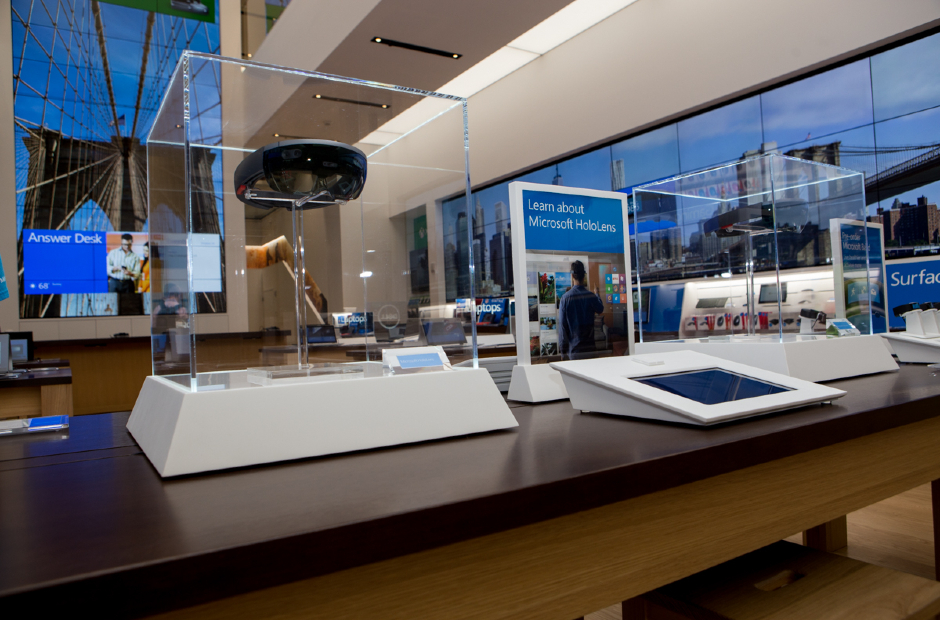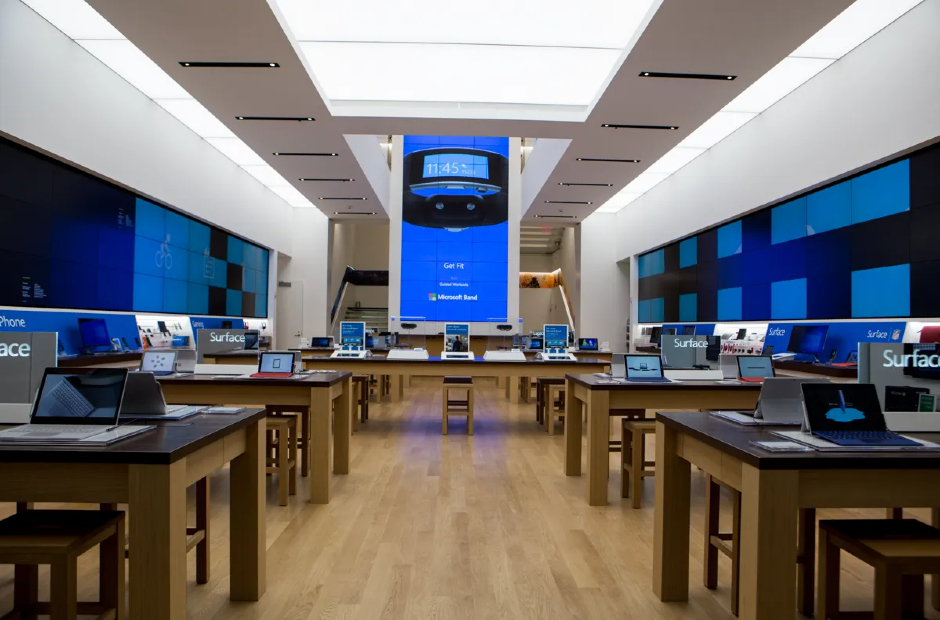Flagship stores are often seen as the epitome of a brand’s retail experience. They offer brands a chance to showcase their full product range, present their brand story, and create immersive customer experiences. One way to elevate these experiences is by integrating technology into the showroom, particularly in the display stands. This article explores how digital price tags, touchscreen panels, and augmented reality experiences can enhance the customer experience and gather valuable customer data.
Digital price tags
Pricing is an integral part of the customer’s decision-making process. However, traditional price tags can be limiting and labor-intensive to update. This is where digital price tags come in. Digital price tags or electronic shelf labels provide an innovative and efficient way to display prices on your display stands. They allow for real-time pricing updates, provide additional product information, and enhance the aesthetic appeal of your displays.
Using digital price tags on your display stands offers numerous benefits:
- Dynamic pricing. Digital price tags can be updated in real-time from a central system. This allows for dynamic pricing strategies, such as time-specific discounts or price adjustments in response to competitor activity.
- Additional information. Besides the price, digital tags can display other product information. Such as product origin, materials used, customer reviews, providing customers with more comprehensive product insights.
- Aesthetic appeal. Digital price tags have a sleek and modern look. It can enhance the visual appeal of your display stands and create a high-tech shopping environment.
Moreover, their sleek and modern appearance enhances the aesthetic appeal of display stands, creating a high-tech shopping environment. Overall, using digital price tags improves efficiency, enhances the customer experience, and adds visual appeal to retail displays.
Touch Screen Panels
Incorporating touchscreen panels is another way to integrate technology into your display stands. Touch screen panels can serve as interactive information kiosks. Offering detailed product information, providing recommendations, and facilitating purchases.
Here are some ways touchscreen panels can enhance the customer experience and streamline operations:
- In-depth product information. Touch screen panels can provide detailed product specifications, usage instructions, or styling tips. It gives customers a better understanding of your products.
- Product availability and location. These panels can be linked to your inventory system to show product availability or direct customers to the location of the product in the store.
- Personalized recommendations. By incorporating AI and machine learning, touchscreen panels can provide personalized product recommendations based on customer inputs or purchase history.
- Self-checkout. Touchscreen panels can facilitate self-checkout for a fast and seamless shopping experience. It reduces waiting times and freeing up your staff for other tasks.
By leveraging AI and machine learning, touchscreen panels can offer personalized product recommendations based on customer inputs or purchase history. Additionally, they enable self-checkout, resulting in faster and more efficient shopping experiences while freeing up staff for other responsibilities.

Augmented Reality Experiences
Augmented Reality (AR) offers a compelling way to engage customers and provide them with unique shopping experiences. By blending the physical and digital worlds, AR can help customers visualize products in different contexts. Additionally, it can help to access additional virtual information while shopping in your flagship store.
Virtual try-ons
One of the most popular applications of AR in retail is virtual try-ons. This feature can significantly enhance the customer experience, particularly for products that traditionally require fitting. Retailers like Zara and Gap allow customers to see how clothes look on them without physically trying them on. This technology can also be used for accessories like watches or jewelry, letting customers experiment with different styles effortlessly.
Cosmetic brands like Sephora and L’Oréal allow customers to test different makeup products virtually. This can be particularly useful for products like lipstick and eyeshadow, where physical testing can be messy and time-consuming. Ray-Ban and Warby Parker allow customers to virtually try on different frames. It helps them find the perfect fit and style from a wide range of options.
Product visualization
AR can also help customers visualize how products will look or fit into their personal spaces. This can be especially useful for items like furniture, home decor, or appliances, where size and aesthetics can impact buying decisions. Ikea and Pottery Barn have AR apps that allow to visualize how furniture items would look in customers’ homes. Before purchasing, customers can see if the product fits their space and matches their interior style.
Samsung and LG provide AR apps that let customers visualize how appliances like refrigerators or washing machines would fit into their homes. Saatchi Art let customers visualize how artwork or wall decor items would look on their walls. It helps them choose pieces that complement their existing interiors.
Interactive product information
AR can also be used to display additional product information or interactive product demonstrations. It can be used when customers point their mobile devices at certain products or QR codes. AR can provide an interactive way to present detailed product features or specifications. For example, pointing a smartphone at a smart TV in a store could display an overlay of its:
- technical specifications
- compatible devices
- subscription services.
AR can show customers how a product works. AR app for a coffee machine could show a demonstration of how to set up the machine and brew coffee. It can also be used for brand storytelling. It can provide an interactive and engaging way for customers to learn more about the brand’s history, values, or production processes.
Integrating augmented reality experiences into your flagship store creates a shopping location and an interactive destination. These AR features enhance the customer experience by providing personalized, informative, and engaging content that drives sales and fosters brand loyalty.
Conclusion
Integrating technology in flagship stores, particularly display stands, is not just about staying current with the latest retail trends. It’s about enhancing the customer experience, making operations more efficient, and leveraging data to understand your customers better. By integrating digital price tags, touchscreen panels, and AR into your flagship store, you can create a high-tech shopping environment.
By leveraging these technologies, you can make your flagship store not just a place to buy products. But also a destination where customers can explore, learn, and engage with your brand meaningfully. Creating such unique and memorable experiences can help your brand stand out and forge stronger relationships with your customers.
If you are interested in expanding your knowledge of technologies, make sure to check out this interesting article – How Apple Vision Pro Headset Could Revolutionize Employee Onboarding, to find out how these headsets could revolutionize onboarding.






